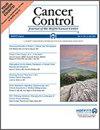Jennifer Kue, Judith A Tate, Bárbara Piñeiro, Laura A Szalacha, Bounthanh Phommasathit, Somany Pich, Usha Menon
下载PDF
{"title":"以证据为基础的量身定制导航干预提高东南亚妇女癌症筛查的文化和语言适应性","authors":"Jennifer Kue, Judith A Tate, Bárbara Piñeiro, Laura A Szalacha, Bounthanh Phommasathit, Somany Pich, Usha Menon","doi":"10.1177/10732748251329867","DOIUrl":null,"url":null,"abstract":"<p><p>BackgroundSoutheast Asian immigrant women in the U.S. have high rates of breast and cervical cancer, yet they are the least likely of all racial/ethnic groups to get screened. To address this disparity, we adapted the evidence-based Tailored Intervention Messaging System<sup>©</sup> (TIMS<sup>©</sup>), which uses tailored messages and navigation by culturally and linguistically matched community health advisors to overcome barriers to cancer screening.ObjectivesThis study describes the cultural and linguistic adaptation of TIMS<sup>©</sup> to improve breast and cervical cancer screening among Southeast Asian immigrant women in the U.S.MethodsGuided by Stirman et al.'s adaptation framework, we conducted focus groups and in-depth interviews to identify key constructs related to cancer screening (knowledge, perceived barriers, perceived risk, benefits, self-efficacy). Using the TIMS<sup>©</sup> and the thematic content from qualitative data, we modified messages for content and context. Messages were divided into three categories: 1) existing messages identified in thematic analyses, 2) existing messages not identified in thematic analyses, and 3) new messages that emerged from thematic analyses.ResultsContextual and content modifications were made to the TIMS<sup>©</sup> message library. Messages were translated into Lao, Khmer, and Vietnamese. Through an iterative process, the investigator, community health advisors, and cultural community advisory board members reviewed and revised the messages for translation accuracy, relevance, and clarity.ConclusionUsing relatable language and context is critical to engaging women from Southeast Asian communities in improving breast and cervical cancer screening uptake. This adaptation approach can be applied to tailor interventions for other languages, cultures, and underrepresented groups.</p>","PeriodicalId":49093,"journal":{"name":"Cancer Control","volume":"32 ","pages":"10732748251329867"},"PeriodicalIF":2.6000,"publicationDate":"2025-01-01","publicationTypes":"Journal Article","fieldsOfStudy":null,"isOpenAccess":false,"openAccessPdf":"https://www.ncbi.nlm.nih.gov/pmc/articles/PMC11963782/pdf/","citationCount":"0","resultStr":"{\"title\":\"Cultural and Linguistic Adaptation of an Evidence-Based Tailored Navigation Intervention to Increase Cancer Screening Uptake Among Southeast Asian Women.\",\"authors\":\"Jennifer Kue, Judith A Tate, Bárbara Piñeiro, Laura A Szalacha, Bounthanh Phommasathit, Somany Pich, Usha Menon\",\"doi\":\"10.1177/10732748251329867\",\"DOIUrl\":null,\"url\":null,\"abstract\":\"<p><p>BackgroundSoutheast Asian immigrant women in the U.S. have high rates of breast and cervical cancer, yet they are the least likely of all racial/ethnic groups to get screened. To address this disparity, we adapted the evidence-based Tailored Intervention Messaging System<sup>©</sup> (TIMS<sup>©</sup>), which uses tailored messages and navigation by culturally and linguistically matched community health advisors to overcome barriers to cancer screening.ObjectivesThis study describes the cultural and linguistic adaptation of TIMS<sup>©</sup> to improve breast and cervical cancer screening among Southeast Asian immigrant women in the U.S.MethodsGuided by Stirman et al.'s adaptation framework, we conducted focus groups and in-depth interviews to identify key constructs related to cancer screening (knowledge, perceived barriers, perceived risk, benefits, self-efficacy). Using the TIMS<sup>©</sup> and the thematic content from qualitative data, we modified messages for content and context. Messages were divided into three categories: 1) existing messages identified in thematic analyses, 2) existing messages not identified in thematic analyses, and 3) new messages that emerged from thematic analyses.ResultsContextual and content modifications were made to the TIMS<sup>©</sup> message library. Messages were translated into Lao, Khmer, and Vietnamese. Through an iterative process, the investigator, community health advisors, and cultural community advisory board members reviewed and revised the messages for translation accuracy, relevance, and clarity.ConclusionUsing relatable language and context is critical to engaging women from Southeast Asian communities in improving breast and cervical cancer screening uptake. This adaptation approach can be applied to tailor interventions for other languages, cultures, and underrepresented groups.</p>\",\"PeriodicalId\":49093,\"journal\":{\"name\":\"Cancer Control\",\"volume\":\"32 \",\"pages\":\"10732748251329867\"},\"PeriodicalIF\":2.6000,\"publicationDate\":\"2025-01-01\",\"publicationTypes\":\"Journal Article\",\"fieldsOfStudy\":null,\"isOpenAccess\":false,\"openAccessPdf\":\"https://www.ncbi.nlm.nih.gov/pmc/articles/PMC11963782/pdf/\",\"citationCount\":\"0\",\"resultStr\":null,\"platform\":\"Semanticscholar\",\"paperid\":null,\"PeriodicalName\":\"Cancer Control\",\"FirstCategoryId\":\"3\",\"ListUrlMain\":\"https://doi.org/10.1177/10732748251329867\",\"RegionNum\":4,\"RegionCategory\":\"医学\",\"ArticlePicture\":[],\"TitleCN\":null,\"AbstractTextCN\":null,\"PMCID\":null,\"EPubDate\":\"2025/4/1 0:00:00\",\"PubModel\":\"Epub\",\"JCR\":\"Q3\",\"JCRName\":\"ONCOLOGY\",\"Score\":null,\"Total\":0}","platform":"Semanticscholar","paperid":null,"PeriodicalName":"Cancer Control","FirstCategoryId":"3","ListUrlMain":"https://doi.org/10.1177/10732748251329867","RegionNum":4,"RegionCategory":"医学","ArticlePicture":[],"TitleCN":null,"AbstractTextCN":null,"PMCID":null,"EPubDate":"2025/4/1 0:00:00","PubModel":"Epub","JCR":"Q3","JCRName":"ONCOLOGY","Score":null,"Total":0}
引用次数: 0
引用
批量引用




 求助内容:
求助内容: 应助结果提醒方式:
应助结果提醒方式:


